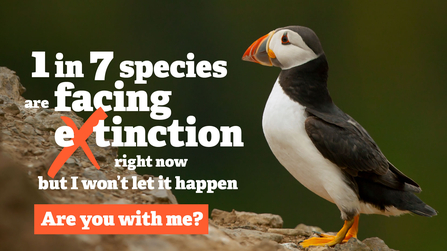
Our natural world is in trouble
This is no secret. Wildlife is disappearing at an alarming rate - some are calling it the next mass extinction - and the threat of climate catastrophe is a constant worry. We live in a time of emergency.
There is still hope - we can tackle both of these critical issues - but we have to act now. Time is running out.
What needs to happen?
The Wildlife Trusts are calling for at least 30% of our land and sea to be connected and protected for nature’s recovery by 2030. Making more space for nature to become abundant once again will give our struggling wildlife the chance to recover and also restore beautiful wild places - places that store carbon and help to tackle the climate crisis.
30% is the bare minimum that nature needs to start recovering but we are far short of this and need your help to turn things around...
We’ve set ourselves an ambitious goal – to raise £30 million and kickstart the process of securing at least 30% of land and sea in nature’s recovery by 2030. We will buy land to expand and join-up our nature reserves; we’ll work with others to show how to bring wildlife back to their land, and we’re calling for nature’s recovery through a new package of policy measures including big new ideas like Wildbelt.
The next ten years must be a time of renewal, of rewilding our lives, of green recovery. We all need nature more than ever and when we succeed in reaching 30 by 30 we’ll have wilder landscapes that store carbon and provide on-your-doorstep nature for people too. Everyone can support and help us to succeed.Chief Executive, The Wildlife Trusts
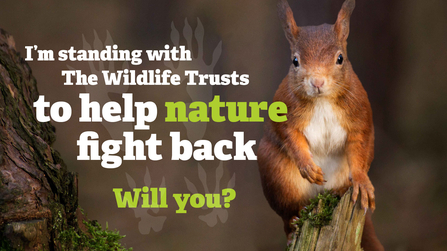
We can do this together
|
By joining our mission for nature's recovery, you will make a real difference to wildlife and our natural world. Every pound donated will help us achieve our vision for a wilder future. Together we can restore huge peatlands, which store carbon and become a home for threatened birds like curlews and golden plovers. We will create new wetlands, which reduce the risk of towns and villages flooding and are also great for dragonflies and water voles. We will plant new underwater seagrass meadows to soak up carbon and shelter sea horses and other sea life. Nature has given us so much, it's now our turn to give back. |
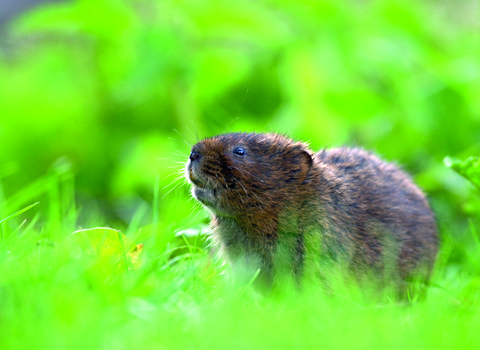
Water and Wildlife
We urgently need to reconnect habitats and make space for nature once more. We're aiming to do just that with our Water and Wildlife campaign where rivers become the wild blue lines that allow life to flow through the landscape.
Many rivers suffer relentlessly from low flow, nutrient and sediment run-off from farmland and historic modifications. Rivers with cleaner water and more varied features support more wildlife - fast flowing bubbling riffles, calm pools, gravel beds, tree roots and natural riverbanks where animals can shelter, breed and feed and plants can flourish.
The Water and Wildlife campaign aims to raise funds to build a team of Conservation Advisers to bring nature back to four major river catchments.
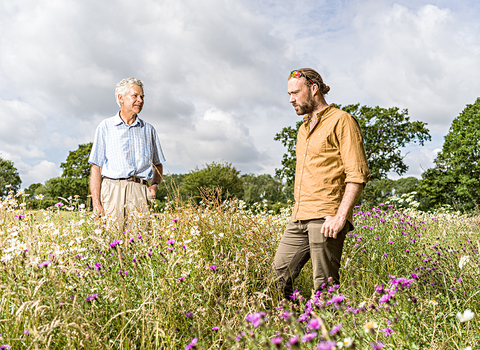
Sam Hanks, Wilder Landscapes Manager and Richard Symmes, Farmer - John Ferguson
Farmland Wildlife Advice
Farmland is a vitally important habitat for many species and there are huge opportunities in Suffolk to help improve our farms to enable nature to thrive.
Suffolk Wildlife Trust has been working with farmers and landowners for many years, offering advice and expertise to help increase biodiversity and improve habitats for Suffolk’s wildlife. From hedges, wider field margins with wild flowers, plant mixes to provide birds with food over the winter months, limiting or removing pesticide use and restoring farmland ponds, to stream and river management, there's so much potential for farmers to help our struggling wildlife.
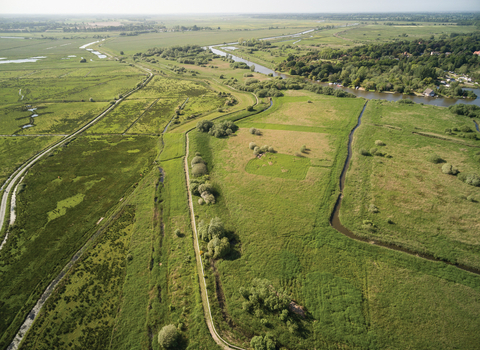
Aerial view of Carlton Marshes by John Lord
Landscapes for nature
Reconnecting habitats and converting former arable or marginal fields for wildlife brings huge benefits - for people as well as nature. Our vision for 1,000 acres of wildness at Carlton Marshes, next to Lowestoft, is an example of how we can restore landscapes for wildlife. Two areas of former fields have been converted to a wetland wonderland, providing food and shelter for a huge variety of species - from fen raft spiders to marsh harriers. The gateway to the southern Broads National Park, connectivity in the landscape opens up a wide area for nature to move through and spread. Crucial in a time of climate change where the ability to move is vital for survival. Nature cannot survive in reserves alone, it needs to thrive everywhere - in back gardens, towns and cities, as well as green spaces and farmland.
